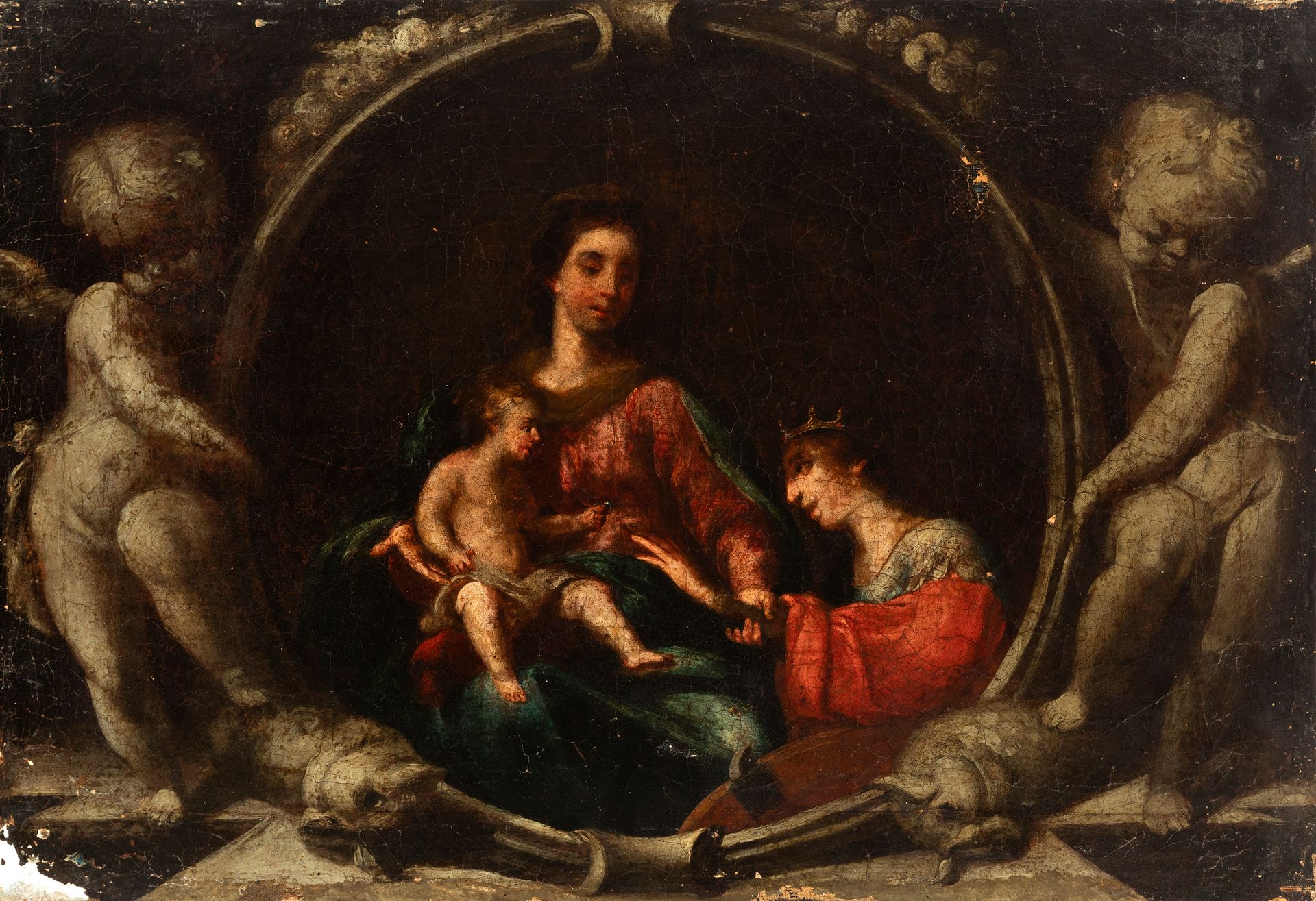Description
Madrid school; late 17th century.
Madrid school; late 17th century. "The mystical nuptials of Saint Catherine". Oil on canvas. It presents faults and repainting. Measurements: 35 x 51 cm. Inscribed in a theatricalized border, which follows aesthetic patterns typical of classicism, a scene of religious character is inscribed. Flanked by two putis and garlands, which seem to imitate sculpture, we can observe a central image, starring Jesus, the Virgin and Saint Catherine. The Virgin, as the throne of the child, is in the centre, while the little Jesus bows to the saint, with the intention of putting a ring on it. Saint Catherine, on the right, extends her hand, which is at the same time grasped by Mary, who seems to be facilitating the betrothal. Saint Catherine de Ricci was an Italian Dominican nun, to whom miraculous visions and bodily encounters with Jesus, both the infant Jesus and the adult Jesus, are attributed. She is said to have spontaneously bled with the wounds of the crucified Christ. She is venerated for her mystical visions and is honoured as a saint by the Catholic Church. Born into a patrician family, at the age of 6 or 7, her father enrolled her in a school for Benedictine nuns in the Monticelli neighbourhood near her home, where her aunt, Luisa de 'Ricci, was abbess. She was a very devout person from a very young age. There she developed a lifelong devotion to the Passion of Christ. After a short time away from the monastery she entered the Convent of St. Vincent in Prato, Tuscany, a cloistered community of nuns of the Third Order of St. Dominic. During her novitiate period De Ricci experienced ecstasies during her routine, which caused her to appear to fall asleep during community prayer services, dropping dishes and food, so much so that the community began to question her competence, and her sanity. Eventually, the other Sisters realised the spiritual basis of her behaviour. By the age of 30 she had risen to the position of prioress. As prioress, De Ricci became an effective and much admired administrator. She was an advisor on various matters to princes, bishops and cardinals. She corresponded with three figures who were destined to become popes: Pope Marcellus II, Pope Clement VIII and Pope Leo XI. An expert in religion, management and administration, her advice was widely sought. She gave advice both in person and through the exchange of letters. She demonstrated by her management that she was extremely effective and efficient in her work, managing her priorities very well. De Ricci's meditation on the Passion of Christ is said to have been so profound that she bled spontaneously, as if she were being whipped. De Ricci is known to have worn an iron chain around her neck, participated in extreme fasting and other forms of penance or sacrifice, especially for the souls in Purgatory.
53
Madrid school; late 17th century.
